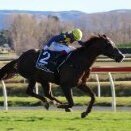-
Available Subscriptions
The Rest of the World
79,813 topics in this forum
-
-
- Journalists
- 0 replies
- 121 views
-
-
-
- Journalists
- 0 replies
- 132 views
-
-
- Journalists
John McEvoy, DRF Editor, Dies at 83
-
- Journalists
- 0 replies
- 113 views
-
- Journalists
Cheval Grand Targeting King George
-
- Journalists
- 0 replies
- 301 views
-
- Journalists
World of Trouble To Hill ‘n’ Dale
-
- Journalists
- 0 replies
- 146 views
-
- Journalists
Bullrich Ends With Mastercraftsman Sale
-
- Journalists
- 0 replies
- 161 views
-
-
- Journalists
- 0 replies
- 141 views
-
-
- Journalists
Op/Ed: It’s About Time
-
- Journalists
- 0 replies
- 149 views
-
- Journalists
Agent Aims To Repeat Happiest Of Accidents
-
- Journalists
- 0 replies
- 205 views
-
- Journalists
Charles Town Adds Four Days to Live Calendar
-
- Journalists
- 0 replies
- 164 views
-
-
- Journalists
- 0 replies
- 139 views
-
-
-
- Journalists
- 0 replies
- 120 views
-
-
- Journalists
Foley Finds Sweet Spot for Hog Creek Hustle
-
- Journalists
- 0 replies
- 177 views
-
- Journalists
Observations: June 12, 2019
-
- Journalists
- 0 replies
- 224 views
-
- Journalists
Son of Yeats Tops Goffs Land Rover
-
- Journalists
- 0 replies
- 446 views
-
-
- Journalists
- 0 replies
- 174 views
-
-
- Journalists
Trainers Feeling Immigration Pinch
-
- Journalists
- 0 replies
- 1.8k views
-
-
- Journalists
- 0 replies
- 172 views
-
-
- Journalists
The Pat Smullen Column: Unsocial Media
-
- Journalists
- 0 replies
- 350 views
-
- Journalists
London Sale Catalogue Goes Live
-
- Journalists
- 0 replies
- 209 views
-
- Journalists
Shaman Gets Go Ahead For Ascot
-
- Journalists
- 0 replies
- 336 views
-
- Journalists
Massive Blow For Lavery Team
-
- Journalists
- 0 replies
- 167 views
-
- Journalists
OBS June Sale Starts Wednesday
-
- Journalists
- 0 replies
- 221 views
-
- Journalists
Tattersalls July Catalogue Now Online
-
- Journalists
- 0 replies
- 194 views
-
-
- Journalists
- 0 replies
- 214 views
-



